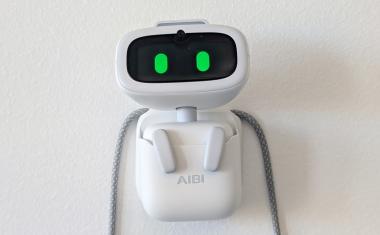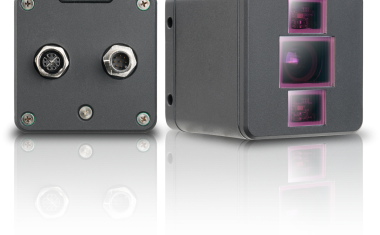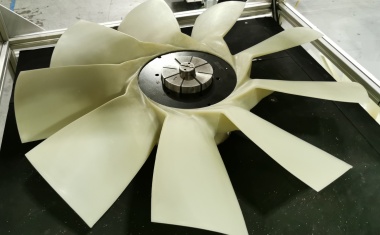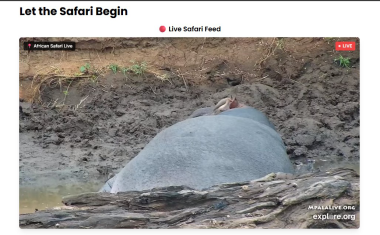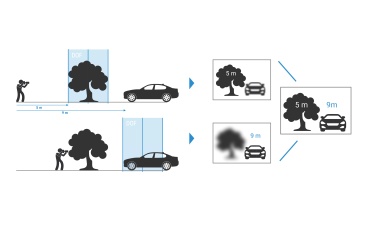SIRIS – The Modular Toolbox
In many fields of production, flawless surfaces are of utmost importance to be competitive. A 100% surface inspection not only ensures customer satisfaction, but also leads to cost efficient production processes by optimising material economy and load balance.
With the modular designed surface inspection system SIRIS (Sensor Independent Real-time Inspection System), SIS developed an extraordinary versatile online measuring system, which can be easily adapted to a variety of surface inspection tasks.
Optical Front End
Depending on the application, SIRIS can be equipped with telecentric laser scanners, with CCD arrays or with a combination of both (hybrid system). Table 1 lists typical optical sensors.
Multiple scanners as well as CCD cameras can be ganged together to achieve 100% width coverage. The mechanical design provides the measurement of transmitted and reflected light both in bright field and in dark field. Telecentric state-of-the-art laser scanners have resolutions of more than 20,000 pixels per meter and a telecentricity tolerance of less than 1% (remark: telecentricity means that geometrical distortion is avoided by a special optical set-up). They can be equipped with light-rod receivers as well as with parabolic receivers (Fig. 1).
Evaluation Electronics
The signals generated by each optical receiver are fed into up to eight input chan-nels with freely programmable 1D-, 2Dfilters and comparator thresholds (Fig. 2). After passing the comparators, the further processing of the digital information is carried out in real-time by software algorithms running on Digital Signal Processor boards. Core algorithm of the software evaluation is a robust box classifier which can take into account more than 100 features per defect for classification purposes.The system also provides algorithms for the detection of streak and periodic defects which are especially important in production environments with driving rollers. After data evaluation is finished, the system server receives the data from the DSP-boards via a PCI-Bus and prepares it for being displayed on the system’s user-interface.
Servers and User Interface
SIRIS is operated by a windows-based workstation running a specially designed graphical user-interface. The backbone of the user-level data processing are a PC-based system server which provides the client PC’s with the production data, and an SQL database server which stores all inspection data for later retrieval. The system server can handle up to 256 client workstations, which are connected to the server via a TCP/IP – link. This enables SIRIS to be monitored, operated and configured from any place in the world with a network connection.
Applications
Due to its optical, electrical and software design, SIRIS offers several 10,000 different system configurations, allowing for dedicated customisation.
The target markets of the SIRIS-technology in the first place are in the glass, foil (plastic film), film, paper and metals industry – which, of course, does not exclude other potential surface inspection applications.
In the flat glass market, manufacturers strive for increased added value by converting, e.g., float glass into material with custom-tailored characteristics. Very often this is achieved by coating processes, resulting in dedicated glass for energy saving, power production (photovoltaic), architectural purposes, avoidance of (undesired) reflections, and also for substrates used in TFT-manufacturing, just to mention a representative selection.
Coatings are, on the one hand, expensive, on the other hand, customer expectations are high. In consequence, the surface(s) of converted materials are expected to be as defect-free as possible. It is clear that this cannot be achieved by simple human visual inspection: first, a 100% control is either not possible (depending on the cycle times), or too expensive; second, human observers tend to soon become tired, missing important flaws; third, defects below a certain size can hardly be detected by the naked eye.
All these reasons lead themselves to an automatic surface inspection by SIRIS.
In the following a case study is presented, demonstrating the superior performance of SIRIS in the field of low-E (low emission) glass inspection. Transparent glass plates of a width of appr. 2,5 m and a speed of about 20 m/min had to be inspected for defects like, e.g. seeds, voids, residues, edge damages, scratches, tire rubs, and so forth.
The optimised SIRIS configuration looked as follows:
- Two telecentric laser scanners of 1250 mm, in adjacent set up
- Infrared laser source
- Two light rod receivers ERT 1250 in reflection, bright field mode
- Two light rod receivers ERT 1250 in transmission, near dark field mode
- Electronics cabinet with digital signal processing boards and industrial PC
- Software module “glass”
Customisation
The defects under consideration could properly be detected, the results are presented in Table 2:
Since both hardware- and software of SIRIS are designed such a way that various channels (i.e., signals of different receivers) can be combined, the detection result of a flaw is nominated G even if only one of the receivers gets a good signal. This is clearly to be seen in Table 2. Fig. 3 presents a reflection image in bright field (left), the right one shows the same defect in transmission near darkfield.
The two defects are visible (detectable) in both channels – reflection brightfield and transmission (near) darkfield –, but, when comparing the video signals, the peak of the smaller defect (white in the transmission channel) is much more distinct. So the combination of two channels gives a higher degree of detection (and certainty) than just one – a very important fact which often is the clue for a proper detection of defects.
Conclusion
The modular approach of SIRIS allows easy adaption of surface inspection tasks by offering a number of various sensors – lasers and line scan cameras –, different receivers, scalable electronics as well as dedicated software packages for applications like glass, plastic and photographic film, paper and metals.
In order to completely meet the user’s expectations and needs, customisation includes full integration into the production process. This means, e.g., interfacing SIRIS to other equipment in the manufacturing chain, providing quality data feedback to the line in order to already avoid defects at an early stage of production.
SIRIS and its predecessors have an installed base of almost thousand systems worldwide.
Dipl.-Ing. (FH) Klaus Simonmeyer Product Manager
Dr. Helmut Schwarz Sales Manager SIS Surface Inspection Systems GmbH Tel. +49-(0)89-748 558 0 k.simonmeyer@sis-inspection.de h.schwarz@sis-inspection.de www.sis-inspection.com







